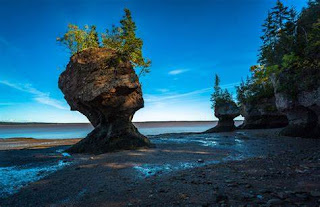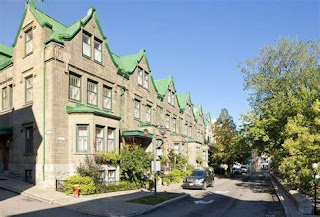I’d wondered for some time what I wanted to do for my next holiday. Bev and I had just gone to the East Coast twice, first to Nova Scotia (Halifax, specifically) and Quebec City, then to Nova Scotia and PEI. We could go to Newfoundland, I supposed, or we could begin looking into the West Coast.
But I recalled looking out of JFK’s windows once and thinking as I surveyed New York’s fabled skyline that I would go there someday. I also thought about New Orleans and Mardi Gras. Mardi Gras was not essential; from what I’d heard, every night was Mardi Gras in New Orleans sans the parade. I looked into both and asked Bev if she was interested.
She was not. She’d gone on this Woman’s Wellness retreat at Cedar Meadows Resort and one of the girls had suggested that they all go to Vegas. Apparently, there was some enthusiasm about it and Bev began to think that she’d like to go. Her friend Lynn had been there and when Lynn thought that she might attend, Bev really began to think about it.
“Who’s planning this trip? I asked.
“I think Angel is,” Bev said.
“You should find out if she is, then, and if the girls are really on board.”
Bev informed me that Angel informed her that it was a go and that the girls were all in. I asked one of the girls who worked at my office who’d been there and she said, “I don’t have any money for that. Or the time. I got two kids.”
I asked Bev again, “Is this a sure thing?” Apparently, it was.
I suggested that it wasn’t and that she should come to New Orleans and New York with me.
She wanted to go to Vegas.
“You’ve no issue with me going to New Orleans and New York?” She didn’t. “Alone?” No. “Without you?” No.
Bev would have gone, but her mother’s passing had put her in a funk that she couldn't get out of; but being a private person, she wouldn’t speak about it either, keeping it to herself, working it out in her own time.
The date for me to book was fast approaching. I asked Bev if she’d heard anything about the Vegas trip.
She hadn’t.
“Then you’re not going,” I said.
Bev said something about my not telling whether she could go or not.
I didn’t say that, I said. I explained. It wasn’t that I forbid her from going, far from it; I said that if no one had gotten back to her about it, then no one was planning it, and if no one was planning it, it was not going to happen. Group trips take planning. Everybody has to know the dates. Everyone has to book time off and that takes coordination. Everybody either has to book individually and get them linked, or someone has to book it all and everybody has to pay their share. None of this was happening.
“Come with me to New York,” I said.
“I’m going to Vegas with the girls.”
I booked my trip. I found a package deal that probably turned out to be more
expensive than had I gone through a travel agent. It might have been a better
deal had I stuck to one destination but I wanted to do both. I was calling it
my Big vacation, what with my going to the Big Easy and the Big Apple. I booked
a hotel room at the Wyndham La Belle Maison, just outside the French Quarter on
Gravier St, right across Canal Street, and at the Doubletree, in New York’s
Times Square, right at 7th and 47th Streets.
Bev’s trip fell through. One by one the girls backed out at the last minute,
including the one who put the idea into everyone else’s imagination.
I bought travel guides (I always buy travel guides), I bought a ticket for a Broadway show. I scanned Google Maps and tried to consider what there was to do, not wanting to waste time in a bar. Fat chance of that in New Orleans. You can’t go to the Big Easy without spending a little time on Bourbon Street. Some may never leave it, but I wanted this trip to be more than just a hangover. I also didn’t want to get mugged either; and in my mind, a staggering tourist all by his self might make an easy target.
I told Bev that it might not be too late to add her to my trip; it was just flights, after all. Hotel Rooms didn’t care how many people occupied them and I had King size beds in both.
She thanked me but said that some of the girls had decided on a more modest vacation again. They were all going to get together at Angel’s cottage just outside Cochrane. I can’t say I wasn’t a little annoyed with angel, as it was her who’d instigated this fiasco in the first place.
I shrugged. “Okay,” I said, “suit yourself.”
I wasn’t being snarky. I wanted her to come with me. I’d asked her enough
times. And I had my doubts that the cottage trip would come off either, considering
the track record of the planner, thus far. Aside from that, where would you
rather go if you thought on it, New Orleans and New York or Cochrane?
Okay, I thought, you’re going it alone this time. I hadn’t done that in years.
But it wasn’t like I wasn’t capable. And it wasn’t like I wasn’t the driver of
all our vacations.
I packed. Mainly clothes for hot weather. Shorts, t-shirts, light weight button-downs. A suit, a few dress shirts, a few ties, dress shoes and sandals. I even packed my clarinet. New Orleans seemed just the spot to bring a clarinet, even if I couldn’t play it yet, even though I’d yet to begin the lessons I’d signed up for. But I’d been mucking about with it and the instructional books I’d picked up, and I was keen to learn as much as I could before taking that first lesson. It all but filled my carry-on, but I didn’t think twice about it. I did get some curious looks from airport security personnel as I passed through metal detectors.
The day came. Bev brought me to the airport and I got on the plane.
I was flying solo. First time in about eight years.
I was on my way to New Orleans.
The Big Easy.
Crawfish, Oysters, po’boys, Bourbon Street and jazz.
I was excited.

































